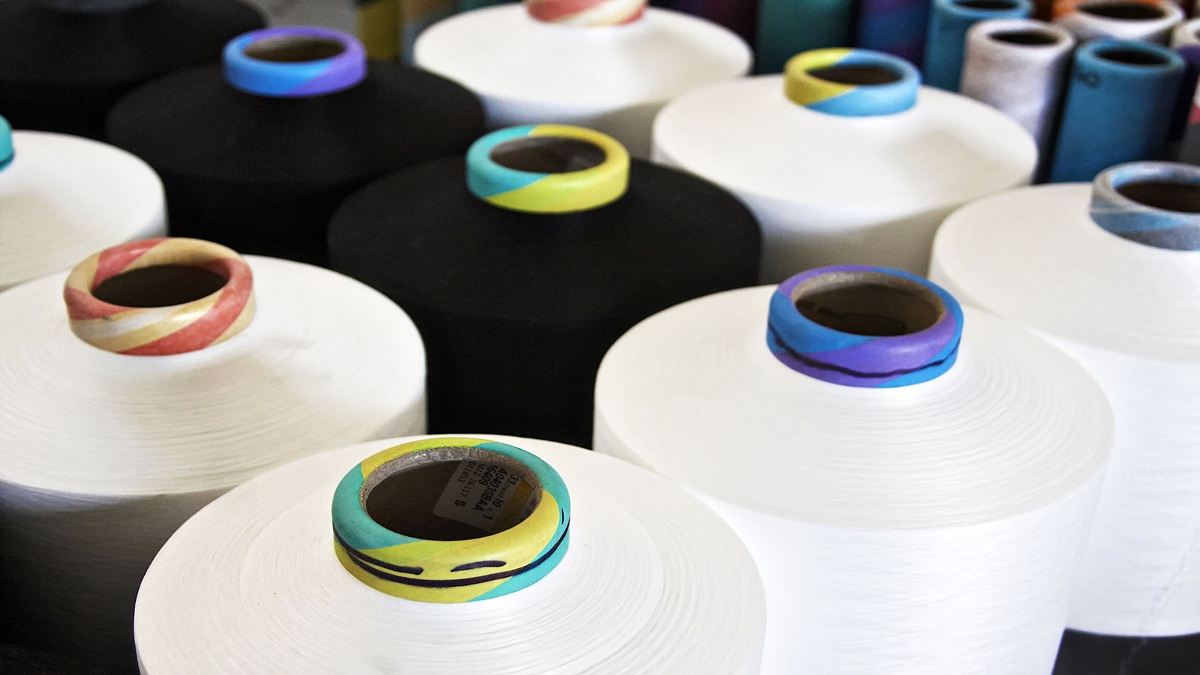Italy has a solid industrial foundation and is the second-largest producer of machine tools market in Europe.
Located on the Mediterranean coast of southern Europe, Italy is one of the four largest European economies. However, due to the problems of an aging population and power shortage in Italy, the government has actively promoted the Industry 4.0 program in recent years, hoping to promote industrial upgrading and development international competitiveness.
The development of Italy industry began in the automobile industry, textile industry, leather, and other industries. It has a solid industrial foundation and is one of Italy's important manufacturing industries. Italy is also the second-largest producer of machine tools in Europe, second only to Germany. The global market holds an important position, and the price of high-quality Italian machine tools is also higher than that of Asian products.
The Italy Ministry of Economic Development launched the Industry I4.0 National Program, which is a top-down approach that uses a horizontal approach around advanced technology, education and the financing-the government allocates 18 billion euros for the initiative. Italy’s I4.0 includes strategic guidelines to be implemented in 2020. This work will change traditional manufacturing methods, focus on skills and advanced technologies, and support the digitization of the Italian economy. It also emphasizes the future of cooperation with other countries and even joins forces with other key initiatives such as the French Federation of Industry and the German platform Industry 4.0 in international trilateral cooperation to support and strengthen the digitalization process of its manufacturing industry. These three countries bring together industry, scientists, and political experts to focus on standardization, the participation of small and medium enterprises (SME), and test platforms.
Italy initiative aimed at attracting private investment through tax incentives focuses on two main focus areas: it aims to support the adoption of innovative technologies, help companies adapt and digitally transform, develop and improve competitiveness; and it focuses on the adoption of educational programs develop skills, including digital innovation center and I4.0 competence center.
Italy is the second-largest manufacturing country in Europe, with extraordinary expertise in strategic areas such as machine tools, fashion, food, automotive and pharmaceuticals. Manufacturing accounts for 23.6% of Italy's GDP. In the current stage of moderate economic recovery, Italy continues to maintain the world's fifth-largest manufacturing trade surplus, totaling approximately US$63.2 billion. Also, more than 64% of Italy metal processing and machinery companies are actively applying at least one advanced manufacturing technology, including the Internet of Things, additive manufacturing, cloud computing, robotics, advanced machine tools, and cybersecurity. The website also pointed out that Accenture’s estimates found that 82% of Italy entrepreneurs believe that automation is the key to the future of Italy manufacturing.
Italy machine tool market dynamics
Italy's machine tool products are excellent, which is an important export strength of Italy. It has always occupied a place in the European and American markets. Important industrial countries such as Europe and the United States are Italy's main export targets. There are about 400 manufacturers in the Italian machine tool industry with a solid industrial foundation.
Europe is the largest export market for Italy machine tool products. Italy’s exports to Europe accounted for 45.2% of its global exports, while the 27 EU countries accounted for 31.8% of its global exports. The second is Asia, which accounts for 27.8% of exports, followed by the Americas, which accounts for 22.8% of exports.
Italy Industry
Italy is one of the major industrial countries in Europe, but its industrial products account for a higher proportion of the light industry, while the scale of heavy industry is smaller than that of Britain, Germany, and France. Although it is small in scale, it also has advanced technology. There are many internationally renowned Italy heavy industries companies. Compared with other economies of similar size, Italy has relatively few world-class multinational companies. On the contrary, the Italy economy is mainly composed of small and medium enterprises.
Main export partners: Germany, France, the United States, Spain, United Kingdom, Switzerland; main import partners: Germany, France, Netherlands, Spain, Belgium, United Kingdom, China.
China, the United States and Germany are the top three exporters of Italy machine tools. Other important export countries are Russia, France, Brazil, India, Turkey, Poland and Mexico.
Italy imports machine tool products from all over the world. The source of Italy machine tool products is highly concentrated in Europe, that is, 71.8% of machine tool products are imported from Europe, while Asian countries account for 24.8%. Germany is Italy's largest importer, Belgium ranks second, and Switzerland ranks third. Japan, South Korea and Taiwan are Italy's fourth, fifth and sixth largest importing countries in the world.
Small and medium-sized enterprises in Italy are facing great challenges under globalization. As many SMEs produce products with only average technical content, but they lack the brand advantages of large enterprises, they face challenges from China and others. Low labor costs are competing with emerging Asian countries that sell similar products cheaply. Among them, leather products and textiles are the most affected. Although Italy has many world-renowned brands in the above products, more Italian producers are small enterprises with a low reputation. Due to a lack of capital investment, they still rely on labor-intensive in the past, it was possible to use the image of Italian manufacturing to maintain profits. However, in recent years, a large number of countries have been able to sell high-quality similar products at lower prices, which has greatly affected similar Italy companies.
Italy's small and medium-sized enterprises are upgrading the technological content of their products to meet the challenges of globalization. At the same time, they are also transferring some low-end technology manufacturing industries to countries with cheaper labor. This small average size of enterprises is a restrictive factor, and the government has been committed to encouraging mergers and reorganizations to merge domestic small and medium-sized enterprises that were originally competing with each other into competitive enterprises.
Highly dispersed urban system:
The tradition of ancient Roman city-state autonomy has created a large, scattered and self-sufficient urban system in Italy. The commercial culture of marine civilization has also promoted closer transportation and industrial connections between cities and towns established by the business. In the 1970s, as a way of solving the imbalance in regional development, urbanization favored areas other than large cities, and small towns developed better. Various factors have contributed to Italy's unique urban structure, and it has also created an Italy manufacturing structure centered on small and medium-sized towns.
GDP supported by SMEs:
In Italy, there are a large number of small and medium-sized light industry enterprises represented by textiles and they are widely distributed. Due to the long history of development, there were still a large number of small handicraft factories and workshops represented by families in Italy at that time. These small factories are mainly distributed in the northeastern and central regions of Italy, called the "Third Italy" region. The Italy government has long noticed the importance of SMEs. In 1922, before World War II, Italy promulgated the first regulations in its history to protect and promote the development of small businesses. At present, small and medium-sized enterprises occupy an important position in the Italian economy. Nearly 70% of the GDP is created by these enterprises, which can be called the "kingdom of small and medium-sized enterprises." Perhaps some people generally think that the competitiveness of small and medium-sized enterprises is not strong, but the proportion of small and medium-sized enterprises in Italy participating in international competition is very large and very competitive.
Innate creativity:
In Italy, there is a saying "Italy does not design, but Italy itself is designed." With a strong sense of design and excellent craftsmanship, it has become the impression left by most Italian products to consumers, and it is also a brand of Italy industry. Image. Today, when material production is extremely rich, after satisfying the basic functional requirements, if the craftsmanship precision, user experience, artistic aesthetics, and other aspects are kept improving, it is often the key to the victory of the manufacturing products in the competition. The craftsman spirit of Italians is reflected in the whole process from design to manufacturing: in the design stage, the craftsman spirit is reflected in the understanding and respect of culture and users; in the manufacturing stage, it is reflected in the inheritance and innovation of craftsmanship and technology. Romantic and fashionable Italy seems free and unrestrained, but it also has another side, that is, the spirit of meticulous and rigorous manufacturing. "Made in Italy" is not only synonymous with luxury goods, but also means high taste and high quality. The innate creativity of Italians perfectly combines traditional craftsmanship with modern technology, products, and culture. This is also the so-called "Made in Italy"!
Major industries in Italy
Underestimated Italy industry:
Under the brilliance of design, Italy's industrial level has been underestimated. Italy is a traditional industrial power. In World War II, Italy had its guns and ammunition, aircraft cannons. According to the ranking of the total GDP of the world's economies, Italy is the fourth largest in Europe and the eighth largest in the world. Italy has some highly advantageous industries in the world, which are reflected in high-tech and traditional technologies.
-
Automobile industry
Italy is one of the few countries in the world with complete automobile industry. Many models of the world's major automobile manufacturers bear the unique mark of Italian designers. The Italian automotive design industry has conducted a lot of in-depth research on car styles, aerodynamics, new processes, new materials, and safety, etc., to meet the needs of the market with the greatest flexibility, making the automotive design of Italy companies’ famous all over the world. Almost all supercars in the world come from Italy.
In the field of automobile manufacturing, the Italian automobile manufacturing industry represented by Fiat is at the world's advanced level in the design and manufacturing of complete vehicles and engines, R&D capabilities and levels, and manufacturing processes and technologies. In the manufacturing of parts and components, Italy has a long history of the production of auto parts, especially the production of tires and precision machinery, appliance machinery, gears, connectors, and molds among the best in the world.
-
Leather and garment industry
Italy is a traditional leather producer, and its leather production technology and output occupy a leading position in Europe and the world. Italian leather production companies are mainly distributed in the four major production areas of Vicenza, Tuscany, Solovra, and Milan. They are internationally oriented companies and most of them have close cooperative relations with foreign suppliers and customers. The textile and garment industry are a traditional industry with a long history in Italy and a pillar industry of the Italian national economy. High-quality textiles and multi-brand ready-to-wear garments represent the trends and trends of the fashion industry and make Italy a global textile and garment production and export powerhouse.
-
Aerospace industry
Italy has a high level of technology in terms of launch vehicle structure, solid booster, fuel pump, satellite antenna, space laboratory pressure chamber, temperature control system, and sealing system. A national aerospace development plan is formulated every five years, funded by the government, and the Italy Aerospace Research Center is responsible for implementation. R&D activities are carried out in basic space research, the use of the International Peace Space Station, communications, earth observation, ground data processing centers, training, etc.
-
Special machinery equipment, machine tools, and robots
Machine tools and robots are the most active and value-added products exported by Italy in the high-tech field. According to the statistics of the Italy machine tool industry, Italy has become the sixth-largest supplier of the Chinese machine tool market.
Italy’s robotics industry is the essence of Italy’s machinery manufacturing industry. It is at the international leading level in terms of innovative R&D strength and market size, and its technological level has surpassed Germany and Japan in some aspects. At present, there are more than 50 robot manufacturers in Italy, and their annual R&D expenses generally account for 5-10% of their sales. The robot systems used by E-Da in-vehicle manufacturing, such as welding robots, vehicle assembly robots, and body spraying robots, are at the leading level in the world.
-
Pharmaceutical industry
The pharmaceutical industry is another important competitive industry in Italy. In terms of competitiveness, labor productivity, R&D capital intensity, export performance, and human resource quality, the Italian pharmaceutical industry is ahead of other manufacturing industries, and its output value and the number of companies are second only to Germany in Europe.
-
High-speed railway and urban rail transit technology
Italy is an international leader in the design and construction of high-speed railways and urban rail transit, the integration of key railway safety technologies, and vehicle manufacturing technologies.







.jpg)
.jpg)


點-m-90454917_m.jpg)


